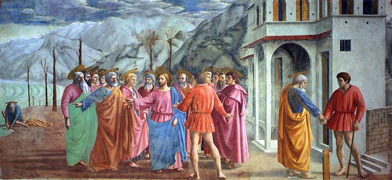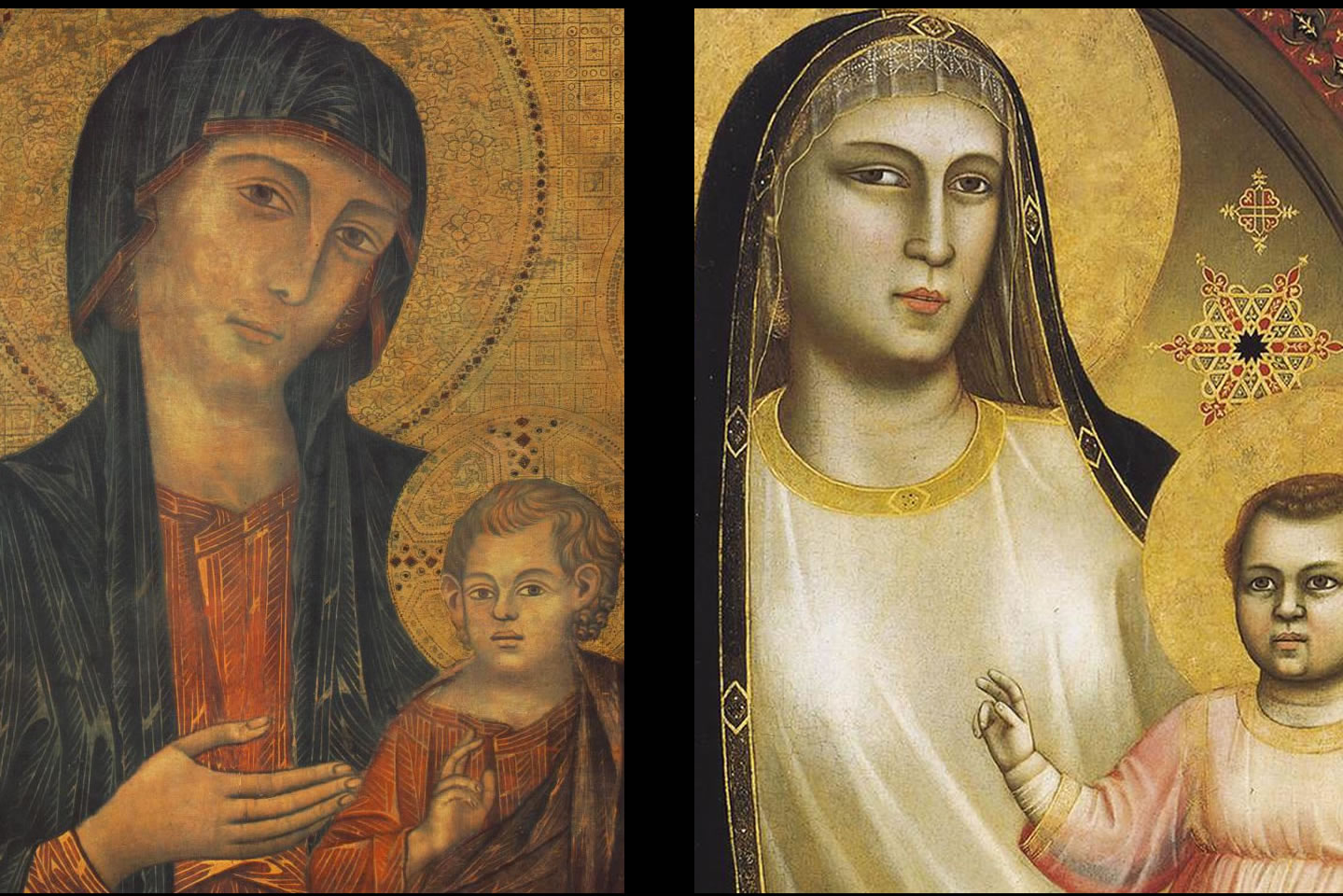Imitation and Emulation in Renaissance Art
The idea that a great artist is someone who has meticulously and persistently, copied the ideas and works of another artist, may seem strange to most 21st century minds. In contemporary western society, we place a great deal of importance, seemingly, on originality and uniqueness, in the world of visual art. However, all art is evocative on some level, of something that has come before, and originality can be as subjective as the art itself.
In Gardener's text, Art Through the Ages: A Western Perspective, we are given an excerpt from Cennino Cennini's The Artist's Handbook, published in 1400 CE (pg. 431). Cennini strongly encourages the young artist to seek out the best and most successful artists and art available to them, and set to work copying their form and style, over and over, until perfect duplication of the work is achieved. At the same time, he suggests the young apprentice focus on one artist or work at a time, that to try and learn too much at once, will only detract from the ultimate goal, of perfecting the craft. Cennini insists that through dedicated and repetitive imitation and emulation of works of art that inspire, one will eventually be skilled enough, to reveal his own style.
In Gardener's text, we have an example regarding early Italian Renaissance painter, Masaccio, born Tommaso di Ser Giovanni di Simone, stating that, 'most art historians agree, "... no other painter in history has contributed so much to the development of a new style in so short a time..."' (pg.432). Masaccio's Tribute Money, a fresco painted in Santa Maria del Carmine, in Florence, Italy, for the Brancacci family chapel, ca. 1424 – 1427 CE, is a beautiful example of imitation and emulation, resulting in a unique style and innovation. In this painting, shown below, Masaccio draws on influences from other artists.
Giotto di Bondone is widely considered to be the first, true Renaissance artist. Giotto approached his subject matter in a more natural manner than many of his contemporaries, as in his "Madonna Enthroned", ca. 1310 CE. When we compare it to Cimabue's Madonna, painted ca. 1280-1285 CE, we see that Giotto, who was a student of Cimabue, has taken the skills and knowledge passed on to him by his master, and parlayed it into something new and exciting, treading carefully away from the Byzantine, one dimensional approach. Giotto's Madonna and Child have a more human, grounded quality, he focuses more on the individual subject and her qualities, for example, the way her body is influencing the play of her robes, rather than the other way around. When we experience the human form in "Tribute Money" we can see elements of Giotto in the faces and bodies of Jesus and his disciples... they are very human, emotional, in the moment of the scene. As Giotto strove to import a more realistic perspective in his paintings, Masaccio takes it a step further.
Cimabue Giotto
Another important influence on Masaccio's fresco "The Tribute Money", is the Florentine architect and innovator, Filippo Brunelleschi, the man credited with the Renaissance development of linear perspective, ca. 1420 CE. In short, he demonstrated that with a fixed single point of view, parallel lines appear to converge at a single point in the distance. The people and things Masaccio painted in "The Tribute Money" possess a realistic, spatial relationship to one another, and as a spectator, we are almost in the scene, we feel we are seeing it as we would, had we been there.

The figures in "The Tribute Money" fresco are also influenced by contrapposto, where the standing human figures weight is distributed unevenly, much of the weight resting on one foot, helping to convey a sense of emotion, movement or relaxed body language. Donatello, born Donato di Niccolo Bardi, created St. Mark at Orsanmichele in Florence, sculpted in marble ca. 1411 - 1413, shown below, one of the earliest examples of the implementation of contrapposto in Renaissance art. While Donatello was influenced by Brunelleschi, he was also influenced by Greek and Roman works from classical antiquity, and in Masaccio's painting above, we clearly see his use of contrapposto, giving his figures a sense of vibrancy and movement.
Ceninni's advice to budding young artists to employ imitation and emulation as springboards in learning the crafts of painting and sculpture, is spot on, and we can observe some of the the trickle-down effect of it's influence, in the Florentine, early Renaissance artists, discussed above. The result is a more and more refined and realized style, that continues to inform artists today. We must remind ourselves that six or seven hundred years ago, artists were more like craftsmen - rarely, if ever, making art for themselves, or for the simple pleasure of it. Most works were commissioned by the wealthy elite, and the content was, commonly, very specifically, dictated by the patron of the commissioned work. Materials were far too dear, and it was more important for an artist to be working and earning a living, than to produce something that no one had ever seen before. Originality and uniqueness were not the goal of the early Renaissance artist, rather, the main goal might have simply been, perfecting your skills, striving to being the best at your craft, and earning the chance to continue doing it.
Source: Gardener's Art Through the Ages: A Western Perspective, Vol., 2, 13th Ed., by Fred Kleiner, Cenage Learning, Copyright 2009, Pgs., 425, 431, 432


